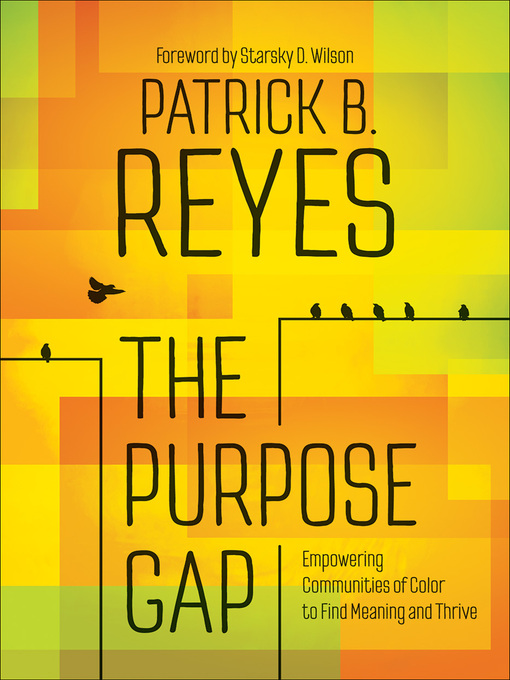In The Purpose Gap, Patrick Reyes reflects on a family member's death after a long struggle with incarceration and homelessness. As he asks himself why his cousin's life had turned out so differently from his own, he realizes that it was a matter of conditions. While they both grew up in the same marginalized Chicano community in central California, Patrick found himself surrounded by a host of family, friends, and supporters. They created a different narrative for him than the one the rest of the world had succeeded in imposing on his cousin. In short, they created the conditions in which Patrick could not only survive but thrive.
Far too much of the literature on leadership tells the story of heroic individuals creating their success by their own efforts. Such stories fail to recognize the structural obstacles to thriving faced by those in marginalized communities. If young people in these communities are to grow up to lives of purpose, others must help create the conditions to make that happen. Pastors, organizational leaders, educators, family, and friends must all perceive their calling to create new stories and new conditions of thriving for those most marginalized. This book offers both inspiration and practical guidance for how to do that. It offers advice on creating safe space for failure, nurturing networks that support young people of color, and professional guidance for how to implement these strategies in one's congregation, school, or community organization.
|In The Purpose Gap, Patrick Reyes reflects on a family member's death after a long struggle with incarceration and homelessness. As he asks himself why his cousin's life had turned out so differently from his own, he realizes that it was a matter of conditions. While they both grew up in the same marginalized Chicano community in central California, Patrick found himself surrounded by a host of family, friends, and supporters. They created a different narrative for him than the one the rest of the world had succeeded in imposing on his cousin. In short, they created the conditions in which Patrick could not only survive but thrive.
Far too much of the literature on leadership tells the story of heroic individuals creating their success by their own efforts. Such stories fail to recognize the structural obstacles to thriving faced by those in marginalized communities. If young people in these communities are to grow up to lives of purpose, others must help create the conditions to make that happen. Pastors, organizational leaders, educators, family, and friends must all perceive their calling to create new stories and new conditions of thriving for those most marginalized. This book offers both inspiration and practical guidance for how to do that. It offers advice on creating safe space for failure, nurturing networks that support young people of color, and professional guidance for how to implement these strategies in one's congregation, school, or community organization.
